Nutrient Density and Why You Need It
By Ashley TenBrink, Recent Arizona State University Nutrition Student
Have you ever wondered why you should eat whole foods instead of highly processed foods?
Two words- Nutrient density.
I want you to picture a boxing ring. Standing in the right corner, weighing in with optimum nutrient density is ‘The Apple!’ With perfect natural balance, it has almost everything a body needs. Apples are full of nutrients, fiber, water, vitamins, minerals, antioxidants, enzymes, and electrolytes.

Standing in the left corner of the ring is the ‘Food Imposter – Processed Apple Juice.’ Coming in under the pretense of being good for you, this concoction isn’t what it is made out to be! However, this opponent shouldn’t be underestimated, because it has already undergone a lot to make it to the ring.
A quick backstory:
Apple juice once started in its real form, as an apple, until its fiber filled peel was removed, stripping away its antioxidant power. Then it was mashed down and pressed so that only its inner juice remained. After being stripped down to a concentrate, preservatives, coloring, tap water, and sugar were poured back in. So basically, the once nutritious apple became glorified sugar water.
Whole food exists in its most basic form, without all the extras.
Nutrient density is the reason why people should always seek to fuel their body with whole foods and not highly processed food imposters.
Nutrient density is defined as the amount of nutrient value (including vitamins, minerals, and fiber) divided by the energy content (number of kilocalories).
For instance, a glass of soda is high in calories but low in nutrient value. Fresh spinach, on the other hand, is a nutrient dense food, because its nutritional value is high while the amount of calories in spinach is relatively low.
In other words, if you choose to eat nutrient dense foods, you will get more bang for your buck, nutritionally speaking. Simply put, you will be eating FEWER calories but getting MORE nutrients. You need calories to survive, and calories from the right foods will make your brain and body work at an optimum level.
To continue this conversation about great food and learn about the farmers and ranchers who produce it, visit Arizona Farm Bureau’s Fill Your Plate Blog by visiting www.fillyourplate.org!
Get Cooking with Green Beans
By Lauren Scott, Arizona Farm Bureau Intern
Did you know that we grow green beans here in Arizona? They grow from June to October, and you’re going to want to grab some while they’re still in season!
100 grams of green beans is only 31 calories, and 27% of your daily recommended value of vitamin C. They also contain lots of vitamins A and K.
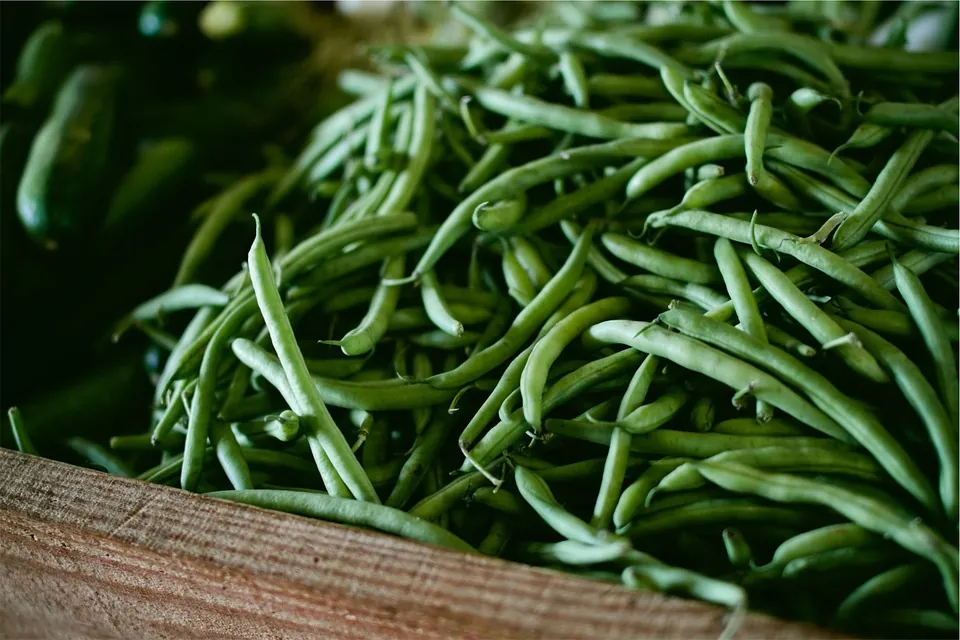
If you are looking to add more fiber or protein to your diet, then green beans are for you! 100 grams of this tasty veggie provide you with about 1.8 grams of protein.
Did you know that raw green beans are a little bit toxic? If you toss raw beans into a salad or gnaw on some straight from the garden, you will be fine. Just don’t go eating buckets of them raw in one sitting.
Now that you know a little bit about green beans, I’m ready to ‘spill the beans’ and share with you some of my favorite bean recipes. Enjoy!
- Balsamic Green Beans with Pine Nuts
- Southern Green Beans
- Roasted Green Beans
- Honey Bacon Green Bean Bundles
- Green Bean Salad
- Crisp Pickled Green Beans
- Garlic Green Beans
- Corn and Green Bean Casserole
- Green Beans with Cherry Tomatoes
- Sesame Roasted Green Beans
- Green Bean and Mushroom Medley
- Fried Green Beans
- The Best Green Bean Casserole
- Green Beans in Sour Cream
- Szechuan Green Beans
- Lamb Stew with Green Beans
What are your favorite green bean recipes? Leave them in the comments! For more veggie recipes and blogs visit Fill Your Plate.
10 Thing I Learned About Food from U.S. Top Ranked Dietitians
By Ashley TenBrink, Recent Arizona State University Nutrition Student
I just read a really great article that was previously published in the Wellness section of U.S. News, titled “10 Things Dietitians Wish They Could Tell Their Younger Selves About Food”. Writer, Keri Gans, interviewed her professional peers and compiled ten segments of very sound advice.
I was really drawn to the concept of this article, “what dietitians wish they could tell their younger selves” because I believe prevention can be the best medicine.
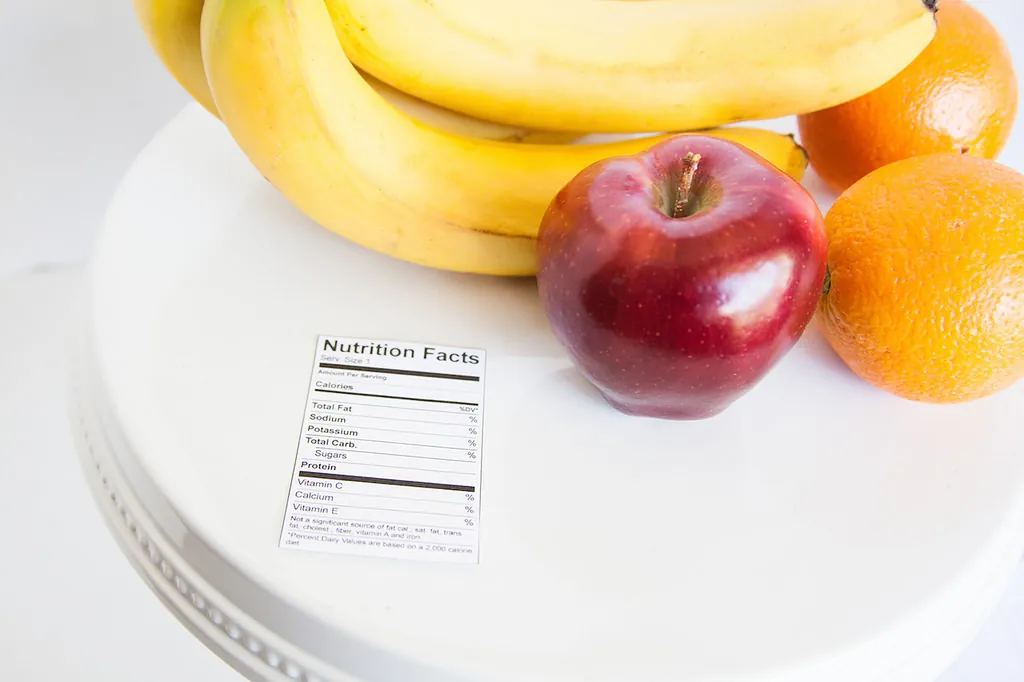
My mom has always emphasized to me the importance of not re-inventing the wheel. Yes, we can learn from making mistakes, but when possible, why not absorb the wisdom that comes from someone who has already been there and done that. By doing this we can learn more quickly and have a better chance at being prosperous in whatever we set out to do.
At this time in my life, I have the ability to make decisions that will lay a solid foundation for my future. As I have mentioned before, I believe that health and nutrition can act as a springboard for success in all areas of a person’s life. That is why I am thrilled to share with you what I learned from these dietitians!
- The first concept, presented by Elisa Zied, registered dietitian nutritionist and author of Younger Next Week: “Drink more water.”
I love that this was number one on the list, not just because it also ranks in my 4 major keys to unlocking your health, but because it is often so easily overlooked! Zied says that she would make water her number one go-to drink because of its “ability to hydrate, eliminate waste, moisturize the skin, and protect the body’s tissues from injury, aid in digestion and fill us up before meals.”
- Second: “What you eat affects how you look”, says Lisa Drayer, registered dietitian nutritionist and author of The Beauty Diet.
Oh, how true this is! As someone who struggled with moderate to severe acne for more than 12 years, I can more than relate to this concept! Limiting my intake of processed sugars has cleared my skin like never before!
Drayer says she would have focused less on external beauty treatments and focused more on the nutrients that can benefit your skin, hair, and nails.
- Third on the list, advice from Lisa R. Young, registered dietitian nutritionist in private practice, author of The Portion Teller Plan and adjunct professor of nutrition at New York University: “Don’t diet.”
Did you read that and think, “What?! A nutritionist advising me not to diet?” However, her advice is psychologically sound. I am a big believer in focusing on what you “can” eat, instead of what you “can’t”. I feel that a person develops a “scarcity mindset” when they attempt to demonize and avoid certain foods or food groups. When we have a scarcity mindset we end up feeling deprived and desperate, and eating healthy becomes unsustainable.
Embracing nutritious foods, paying attention to food portions and enjoying the variety of what I could eat is what helped me overcome the binge eating disorder that haunted me for so long!
- Moving on to number four: “Learn to cook.”
Needless to say, I am going to have to spend some more time on this one.
Kathleen M. Zelman, registered dietitian nutritionist, and director of nutrition at WebMD, stresses the importance and value of sharing the love and joy that comes from preparing dishes with friends and family.
I want nothing more than to share happiness and value with people around me, so I am going to tackle this with a little more zeal in the weeks to come.
- Joan Salge Blake, registered dietitian nutritionist, clinical associate professor at Boston University and author of Nutrition and You brings us our fifth tip: “Get more sleep.”
Yes, yes, and yes! I agree whole heartedly, even though it is so hard for me to do! Even as I write this article it is almost 11:00 p.m. at night. I long for more hours in a day and just love staying up late working on projects and waking up early to go walking with my dog, Mari.
The problem with this scenario, as Blake explains, is that research correlates sleep deprivation with higher levels of the hormone ghrelin, which stimulates hunger. Research also shows that being tired lowers levels of the hormone leptin, which suppresses appetite.
Why make maintaining weight harder for ourselves? Is that extra hour or two worth being “hangry” all day?
- Coming up with number six is Tara Collingwood, registered dietitian nutritionist and sports dietitian in Orlando, Florida, who advises us to: “Be a food snob.”
I don’t know if your parents were the type that made you eat what they set in front of you, or if you were spoiled (um, I mean “well taken care of”) like me, and got to choose what you ate at almost every meal, but I could get behind this tip.
Collingwood says that “Food is meant to be enjoyed and life is too short to eat something that isn’t fantastic and worth the calories, or that’s packed with good nutrition.” I agree with this. We get to make the choice of what we put into our bodies.
However, Collingwood also mentioned, “Deciding in the first bite whether it’s worth it or not to continue eating.” I have a slight problem with this because I do not like to waste food or money. If I made a bad choice then that’s on me, I own it, eat it, and try to do better next time.
- Number seven brought to us by Jackie Newgent, registered dietitian nutritionist, culinary nutritionist and author of The All-Natural Diabetes Cookbook: “Toss out the scale.”
Keeping it real and relatable, Newgent says “weight is just a number on a lifeless piece of equipment! If your jeans start getting tight, go play more or take longer bike rides.’”.
While I agree with the overall premise here, especially adding in more movement and play, I think too much or too little of anything can be a problem. I do not think it is a good idea to weigh or measure yourself every day, however, I think body stats can be a useful benchmark for setting and achieving health and body composition goals. These goals just need to be realistic and productive. Stat taking sessions should also be limited and taken at pre-determined points to track progress.
- Barbara Baron, registered dietitian nutritionist and family meal specialist in New Jersey has one of my favorite tips on the list: “Choose nutrient-dense foods.”
Nutrient density is defined as the amount of nutrient value (including vitamins, minerals, and fiber) divided by the energy content (number of kilocalories).
For instance, a glass of soda is high in calories but low in nutrient value. Soda is not nutrient dense, even though it is calorie dense. Fresh spinach, on the other hand, is a nutrient dense food because its nutritional value is high while the amount of calories in spinach is relatively low. Spinach is very nutrient dense.
This may be an extreme comparison, but it illustrates the idea. If you choose nutrient dense food you can give more value to your body while consuming fewer calories.
- Next, on the list: “Cut the low-calories.” says Patricia Bannan, registered dietitian nutritionist and author of Eat Right When Time Is Tight, for the ninth piece of advice.
If you’re wondering if I favored this tip, you are right! Bannan says she wishes she would have focused more on the quality of the ingredients in her food choices, even if that meant eating a small amount of higher-calorie “real” foods as well as nutrient-dense foods.
An example of this would be eating nuts or avocado. These foods are high in calories, but they are real, natural and contain healthy-fats. Bannan says the low-calorie foods she now chooses to consume are naturally lower-calorie foods such as fruits and vegetables.
- Finally, coming in at number ten: “Stop striving for perfection.”
Ellie Krieger, registered dietitian nutritionist, host of “Ellie’s Real Good Food” on public television and award-winning cookbook author says, “Don’t strive for perfection in the way you eat or in your body image. There is no such thing! Instead, honor and respect your body and enjoy food in a way that supports all it does for you.”
So well said! We are so lucky to be given the chance to experience this life in the body that we have. Whatever place you may be at in your own journey, you can embrace where you are at today!
Don’t get down if you’re not where you think you need to be, embrace the journey and the transformation that is happening both on the inside and the outside of you. Pick one of the ten things mentioned in this article and implement that today. Continue to implement it this upcoming week, and stick with it until it becomes a habit and you find consistency. Then add another one of the ten tips next week and so on until you’re on your way to the healthiest you can be!
If you like this article:
- Body Breakdown: How we Process Nutrients
- Improve your Skin with these Five Nutrition Tips
- Are you Getting Enough Protein?
Body Breakdown: How We Process Nutrients
By Alise Robers, Recent Arizona State University Nutrition Student
The calories that your body doesn’t use right away for energy are either disposed of as waste or stored as fat.1 However, your body doesn’t treat all calories equally. Fiber and protein both have high water contents, which is why you feel so pleasantly full after eating them.1 Fats effect on satiety is a lot like protein and fiber, which is why low-fat diets leave you feeling hungry and depleted. Your body doesn’t need to use as many calories when storing fat because it is able to process fat the most efficiently.1 This means you end up keeping more of it. Simple carbohydrates, on the other hand, have the least effect on satiety.1,2

Protein is something that our bodies work hard to process and even though we would like to believe that all ingested protein turns into muscle and all the fat we eat gets stored where we want it, this isn’t the case.1 In fact, everything we eat has the potential to end up as fat if our body doesn’t use it for energy at the exact moment it is absorbed through our intestines.1 Digestion is an important process for breaking down the food and nutrients our body’s need for energy, growth, and cell repair.2 Knowing what our bodies go through will give us a better understanding of what it needs. Below explains how our body processes different nutrients:
Complex Carbohydrates– Complex carbohydrates are the starches and fiber found in legumes, whole grain breads, and starchy vegetables.2 They release slowly because they take the body longer to digest.1 Carbohydrates are your body’s first choice when it comes to energy but if this slower sugar can’t be used when it is released then it will be converted into fat.1,2
Simple Carbohydrates– Also known as simple sugars, are the most functional energy source.1 They include sugars found naturally in foods like fruits and vegetables as well as sugars added to processed foods. Simple sugars are absorbed into the blood stream quickly and are sent to the liver during the digestion process.1,2 Your liver calls the shots here and if the sugar can’t be immediately used for energy then it will be converted to fat.1
Fats– Fat molecules are a great source of energy that aids your body in absorbing vitamins and the fatty acids it needs to create hormones.2,3 However, they are the backup system when it comes to supplying our muscles with energy.1 Fats are broken down into smaller pieces during digestion where the body converts them into fatty acids and glycerol.2 Eating good fats like nuts, fish, olive oil, and sunflower oil will help lower your body’s response to inflammation.1,2 Less healthy fats like butter and processed snack foods will cause it to increase.1 Avoiding these fats will also help lower your risk for obesity and the complications that come along with it.1
Protein– Foods like beans, eggs, and meat are broken down into small amino acids that the body can readily digest.1,2 These amino acids are absorbed through the small intestine into the blood and carried though out the body.1,2 Proteins are able to help your body build and repair cells, create hormones and enzymes, and keep your immune system strong.3 If you’re exercising then they can be brought to your muscles to aid in muscle growth, but if your body doesn’t need them for muscle growth or maintenance then they will be converted into glucose.1 If that cannot be used for energy as well then it will also be converted to fat.
The best thing you can do for your body is to eat a balanced diet that includes everything you need to be healthy. You can even snack on cookies once and a while. Just remember: Everything in moderation!
References:
- Roizen, Michael F., Mehmet Oz, Ted Spiker, Lisa Oz, Craig Wynett, and Gary Hallgren. You on a diet: the owner’s manual for waist management.p, : Free Press, 2009. Print.
- “The Digestive System & How it Works | NIDDK.” National Institutes of Health.S Department of Health and Human Services, Sept. 2013. Web. 2017.
- “How Your Body Gets Nutrients From Foods.” Breastcancer.org. N.p., 2016. Web. 2017. http://www.breaskcancer.org/tips/nutrition/healthy_eats/nutrients.
Yummy Summer Smoothies!
By Laura Slatalla, Recent ASU Nutrition Student
Summer is here, and this year I’m thinking of making tasty fruity smoothies my cold treat of choice! They can be packed full of vitamins and minerals, plus they won’t melt in your hand! Start with a Greek yogurt base that’s creamy and high in protein, then add fruits and even vegetables. Here are some of my favorite combinations:
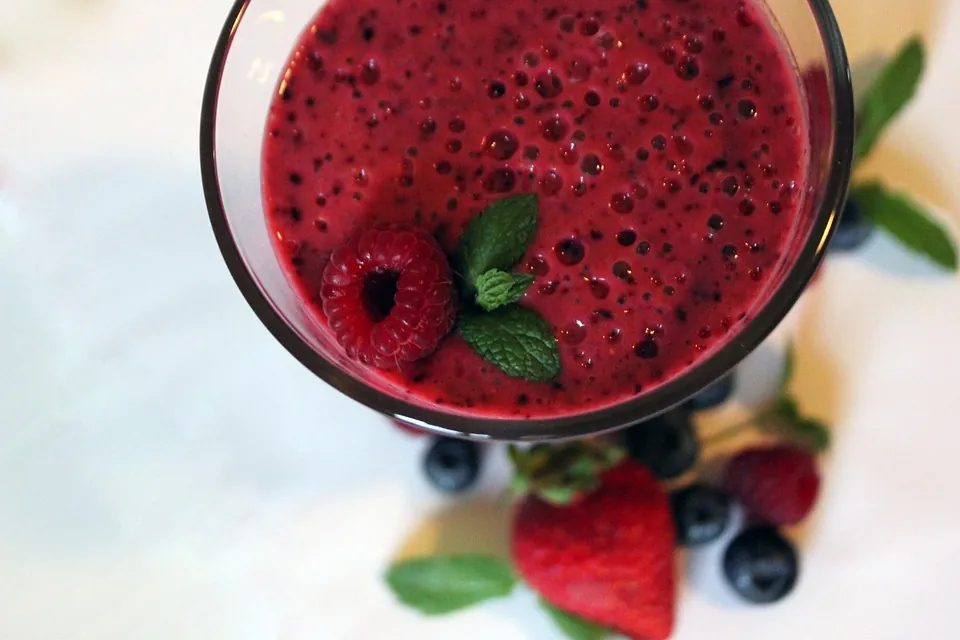
Kiwi Strawberry
You’ll need 2 kiwis, 1 cup of frozen strawberries, 6 ounces of yogurt, and a half a cup of low-fat milk. Combining these fruits provides the perfect balance of sweet and tart! Strawberries and kiwis are both high in vitamin C and contain vitamin A and B vitamins.
Dandelion Greens, Mango, and Pineapple
Dandelion greens can be bitter, but they’re high in calcium, iron, protein, and antioxidants, so blending them with fruit gives you a satisfying snack! Skip the ice and freeze a cup of pineapple. Peel and chop the mango. Use about a cup of the greens.
Blackberry, Banana, and Spinach
Use 1 ripe banana, 1 cup of baby spinach, ½ cup of frozen blackberries, and ¾ cup of low-fat milk. Blackberries are high in antioxidants, spinach is high in vitamin A and C, and bananas have lots of fiber and potassium.
Not only are smoothies healthy and tasty, but they’re fun! Let your kids choose what fruits and vegetables they want to add. Add a cool straw. Switch up combinations and add other flavors like vanilla or cinnamon. If a smoothie ends up more bitter than expected just add a little honey. Good luck with your colorful creations!
Functional Foods Without any Assembly Required
By Kevin Dietmeyer, Recent Arizona State University Nutrition Student
When you buy something it’s important to you that it’s functional, right? You want something that works and if there’s some assembly required then the functionality of that product is now dependent on your ability to follow directions. Some things function without skipping a beat, and usually, they’re things that don’t come with any assembly required. Your food shouldn’t be any different. Foods should be fully functional and they most certainly shouldn’t come with any assembly required.
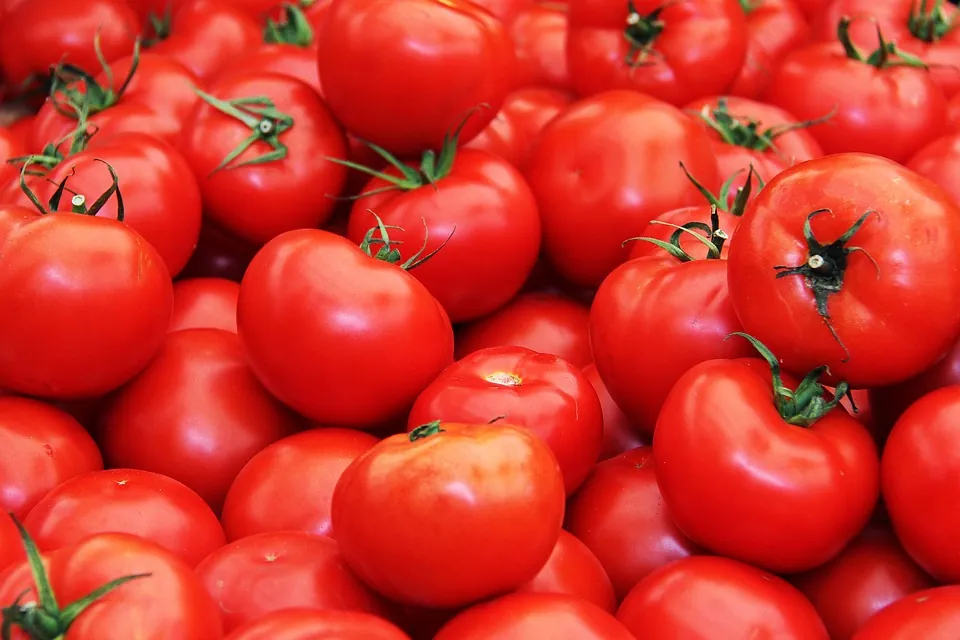
Functional foods are, (according to the Mayo Clinic) foods that have a positive effect on health beyond that of their basic nutrition1. These types of super foods go further than satisfying hunger and they work to fight off disease while keeping you looking your youngest and feeling your healthiest. Functional foods are characterized by extra nutrients and phytochemicals that give them extra oomph, that’s right oomph when it comes to nutritional density.
In short, functional foods are powerful foods that you can use to give yourself and the kids a nutritional boost. One food that is commonly forgotten about and is a spectacular super food is the tomato. Actually, it’s so overlooked that only a few short centuries ago tomatoes were thought to be poisonous because they come from the nightshade family. Tobacco, potatoes, eggplants, and different kinds of peppers also come from the nightshade family. Sometimes family ties can be so unforgiving.
Tomatoes are cancer-fighting foods full of vitamin C and free radical removing antioxidants. They’ve been shown to combat both prostate and colorectal cancer thanks to their high levels of fiber and beta-carotene2. Does the thought of convincing your kids to eat more fruits and vegetables make your blood boil? Tomatoes have been shown to lower blood pressure due to their potassium content and vasodilation effects2. Tomatoes are also full of nutrients that promote heart health and fight against cardiovascular disease and diabetes. Functional foods like tomatoes promote healthy digestion, strong eyes, radiant skin and vibrant hair. If you plan on living longer, you might as well look good doing it.
So where can you find these nutritional knockouts and more? Here are a few links to locally grown tomatoes and other delicious produce in Arizona:
On The Vine Farms in Casa Grande, AZ
Rincon Valley Farmer’s Market In Tucson, AZ
Crooked Sky Farms in Phoenix, AZ
References:
- Mayo Clinic. Nutrition and Healthy Eating. http://www.mayoclinic.org/healthy-lifestyle/nutrition-and-healthy-eating/expert-answers/functional-foods/faq-20057816 Retrieved on 10/22/16.
- Medical News Today. Tomatoes: Health Benefits, Facts, Research. http://www.medicalnewstoday.com/articles/273031.php?page=2 Retrieved on 10/22/16.
Learn a Little bit About Cabbage
By Kevann Jordan, Recent Arizona State University Nutrition Student
Cabbage, a cruciferous vegetable, has only 20 calories per half cup, and though it is light on calories it is packed with nutrients. The MNT Knowledge Center gives a full nutritional breakdown of cabbage and an extensive list of health benefits to be gained from incorporating cabbage into our diet. I will give you a few of the main benefits of cabbage; primarily I want to focus on the benefits that I know personally to be true from experience.
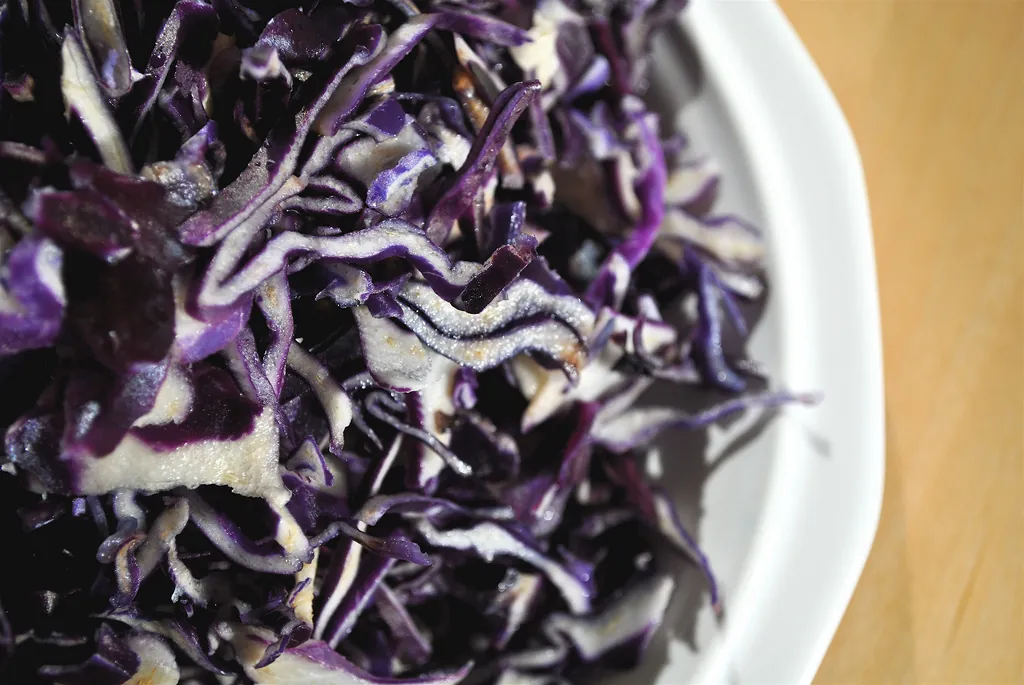
When I was about 11 years old I developed an ulcer. My great grandmother, my nutritional exemplar, upon hearing this diagnosis called my mother and told her that I needed to be eating cabbage. I must admit, at 11 years of age I was not as open to the idea, in fact, all I could think was “Yuck! No way!!” After a lot a antacids and a couple different prescriptions, I was fed up trying to get rid of this burning fiery pit in my stomach and succumbed to the idea of eating cabbage. (I am not advising all of you to go out and drink cabbage juice, ask your doctor, but it worked for me).
I found that I was wrong on several accounts. I learned that cabbage is delicious. I also learned that cabbage works wonders on our digestive system. The water content and the high amounts of fiber are priceless in eliminating toxins through bile and stool. Cabbage often comes in a fermented variety; sauerkraut and kimchi, which are both packed with probiotics. The microbes in the probiotics cause an acidic environment the produces enzymes that allow our digestive system to better absorb vitamins and minerals.
In addition, cabbage contains sulforaphane, which causes the bitter taste in the cruciferous vegetables and also has been found to delay cancer. This sulforaphane inhibits a very harmful enzyme histone deacetylase, also known as HDAC. This enzyme can slow toxic cells and bacteria, both of which can cause cancer and ulcers.If cabbage doesn’t already sound like a wonder food cabbage is also known as ‘brain food’ because of its high levels of vitamin K and anthocyanins, which help our brains, concentrate and increase our mental function. Due to
If cabbage doesn’t already sound like a wonder food, it is also known as ‘brain food’ because of its high levels of vitamin K and anthocyanins. These help our brains concentrate and increase our mental function. Due to cabbage’s incredible nutritional power, doctors have found that cabbage has the ability to help improve our body’s defense again Alzheimer’s disease and dementia.
Let’s eat up… here are some great ways to incorporate more cabbage into our diet. Start at the very beginning. Pick a head of cabbage that is heaviest for its size, with tight leaves, and store it for no more than 2 weeks. Chop it, shred it, eat it raw, eat it boiled, sautéed, stuffed and roasted.
My favorite recipe for cabbage is tied between two recipes, one for cold days and one for hot days.
Vegetarian Polish Cabbage Rolls
Serves 6
2 cups brown rice, cooked
1 lbs veggie crumbles
½ cup onion, minced
1 garlic clove, minced
1 teaspoon ground ginger
1 tablespoon sweet paprika
1 tablespoon parsley, chopped
1 teaspoon black pepper
2 eggs
½ cup vegetable broth
2 tablespoons olive oil
Sauce
1 (12 ounce) can of diced tomatoes
1 (12 ounce) can tomato soup
Directions
- Core cabbage, place in pot and cover with water. Bring to a boil. Lower heat to medium and cover with a lid. Cook until slightly softened. Remove cabbage and place in a dish to cool.
- Meanwhile, in a large pot, saute onions and garlic in the olive oil until transparent. Add crumbles, rice, spices, egg, and vegetable broth. Mix well.
- When cabbage is warm to the touch, peel leaves and place on cutting board. You should have six very large leaves.
- Preheat oven to 375°F.
- Divide filling mixture into six equal parts.
- Fill cabbage leaves and roll. Place filled rolls with folded end down into baking dish.
- Combine soup and tomatoes along with tomato juice from can in separate bowl. Add half of soup can worth of water to sauce. Mix well.
- Ladle over rolls. Cover rolls in aluminum foil and bake for 45 minutes or until cabbage is easily poked with a fork.
Confetti Slaw with Poppy-Seed Dressing
2 tablespoons cider vinegar
1 ½ teaspoons honey
1 ½ teaspoons Dijon mustard
1 ½ teaspoons chopped fresh dill
1 teaspoon olive oil
¼ teaspoon salt
¼ teaspoon pepper
1 cup thinly sliced green cabbage
1 cup thinly sliced red cabbage
½ cup pre-cut matchstick carrots
Directions
Combine first 8 ingredients (through pepper) in a bowl. Add cabbage and carrots; toss to coat. Enjoy!
For more recipes and information about cabbage, visit Fill Your Plate!
The Fitness and Nutrition App You Need in Your Life
By Ashley TenBrink, Recent Arizona State University Nutrition Student
10 inches! I had to re-measure my waist, my thighs, and my hips just to be sure because I couldn’t believe it! In total, I had lost 10 inches in ten days.
Contrast this excitement to my disappointment ten days earlier when, after four weeks of nutritious eating, the scale wouldn’t budge and I had no changes to my body composition.
This was crazy! What was the key difference?
In both time periods, I ate whole foods that were un-processed or minimally processed. In both time periods, I had focused on a balance of proteins, carbs, and fats. In both time periods, I had exercised consistently. What was the difference?
I realized the answer- tracking.
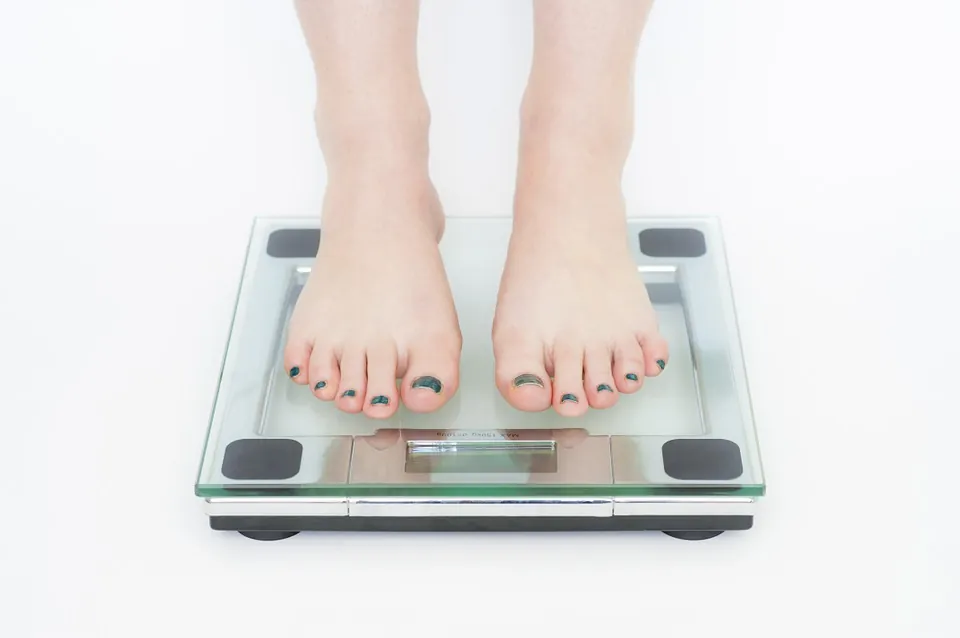
Yes, tracking what I ate made a definite difference in the results I achieved through my nutrition efforts. For the ten day course, I used the MyFitnessPal app to record everything I ate.
The results speak for themselves in my situation, but I wanted to dig a little deeper into the phenomenon behind this app. Was there scientific evidence to back-up my results and confirm the usefulness of MyFitnessPal? Did my weight-loss and physique changes correspond with the intentions of the app developers?
I would like to share my research and observations with you in the following review.
What is MyFitnessPal?
MyFitnessPal (MFP) was created to assist users in improving their diet, increasing physical activity, and accomplishing overall weight loss.
According to the MyFitnessPal app’s description, the self-stated purpose is: “Lose weight with MyFitnessPal, the fastest and easiest-to-use calorie counter for iOS. With the largest food database by far (over 5,000,000 foods) and amazingly fast and easy food and exercise entry, we’ll help you take those extra pounds off! And it’s FREE! There is no better diet app – period.”
According to the MFP app developers, the behavioral and health outcomes that should be influenced by this app are:
- Weight loss
- Increased physical activity (walking steps and additional exercise)
- Stronger sense of community and connection to other fitness enthusiasts
- Improved goals and understanding of calories and nutrients
- Increased motivation
Digging a little deeper into the MFP product description, the developers claim that:
- Diet and exercise tracking should be able to be accomplished in less than 5 minutes a day.
- The step tracker is also built in to track steps and “overall calorie burn.
- Nutrition tracking includes “all major nutrients: calories, fat, protein, carbs, sugar, fiber, cholesterol and more.”
Based on the description details provided, the implied behavior change techniques of MyFitnessPal include:
- Social reward (the ability to share daily food diary and accomplished goals with peers).
- Self-reward (the app enables individuals to see their weight-loss progress in a chart that spans days and weeks.)
- Behavior substitution (daily tracking and personal accountability encourages individuals to make healthier choices.)
- Habit formation (the app encourages daily physical activity through prompts and the opportunity to log exercise.)
- Feedback (the app can be set to provide goals and compares progress to them, both in daily nutrition logging and in an individuals progress in body composition.)
- Self-monitoring of behavior through daily tracking to encourage mindfulness and help weight-loss efforts.
- Commitment (the app sends out a reminder when you miss a day.)
- Goal setting (can be programmed by user or set up automatically by app.)
- Review behavioral and outcome goals (tracking enables.
- Social support general (community is built into the app with the possibility of creating a network of peers).
The MyFitnessPal app contains a built-in database of an estimated 5 million foods and the ability to recognize 4 million barcodes from food items. For these items, it is expected that the nutrient information provided includes: calories, fat, protein, carbs, sugar, fiber, cholesterol and more.
The home screen of the app, when a user first opens it, also reveals the most recent MyFitnessPal blog posts. These articles focus on the areas of nutrition and fitness. Examples include recipes, macro and micro-nutrient explanations, user testimonials and personal stories, fundamentals to advanced exercises, and weight loss strategies.
Does MyFitnessPal produce the outcomes it promises to deliver?
I strongly felt that it would be important to have scientific evidence to confirm or deny the claims made by MFP. I dug into PubMed for my answers.
In 2015, the journal Telemedicine and e-Health published, “A Study to Determine the Most Popular Lifestyle Smartphone Applications and Willingness of the Public to Share Their Personal Data for Health Research” which compared select smartphone lifestyle apps and wearable fitness-tracking devices. The goal of the study was to seek data and research insights that would assist with the prevention and treatment of chronic disease and obesity. More specifically, the study utilized a survey to explore patterns of behavioral tracking using the smartphone lifestyle apps. [1]
Methods used in this study included a cross-sectional Web-based survey that was conducted within a university setting. The survey was comprised of 35-items that asked participants “about their self-tracking patterns; use of lifestyle apps and wearable devices; how their self-tracked health data could be useful to them; and any restrictions they would impose on sharing personal data.” After being tabulated, the responses were analyzed for trends. Results demonstrated by 101 participants revealed: “On average, 3.1 (standard deviation [SD] ±1.9) health and fitness apps were installed by current app users (n = 85), with MyFitnessPal, MapMyRun, Nike+, and Fitbit being most popular. Most participants were willing to share their personal health data for research (77%). Those who did not normally share their health-tracking data were more likely than sharers to be concerned about privacy (odds ratio [OR] = 5.93; 95% confidence interval [95% CI] = 2.09–16.78), as were those not identifying with the quantified-self movement compared with those who were (OR = 5.04; 95% CI = 1.64–15.50).” [1]
The majority of participants were willing to share their personal data, allowing public health research to be conducted, that could assist in targeted personalized program and intervention development. It was evident from this study that an opportunity exists for partnerships between researchers and commercial app developers to improve public health research and practice. [1]
A study published in the journal Biocomputing analyzed people seeking to improve their health and lose weight. The study examined app users who publicly share their logged calorie intake and energy expenditure data. The study examined public food diaries of more than 4,000 long-term active MyFitnessPal users to study the characteristics of a both successful and unsuccessful diets. The scientists used a machine learning model to predict repeatedly if app users would be over or under self-set daily calorie goals. With this information the scientists then examined which features contributed to the model’s prediction. [2]
Results were both expected and unexpected. As expected, users who inputted such entries as “McDonalds” or the category “dessert” were usually over the calorie goal. Unexpected results showed that a difference between selecting pork and poultry also determined dieting success. Users who used the “quick added calories” app functionality also over-shot their calorie goals. This study also suggests that there is potential for further investigation into interactions between consumed foods, such as “mixing protein- and carbohydrate-rich foods”. [2]
Based on these studies, it is my opinion that the MyFitnessPal app does support several of the target outcomes that it implies to influence. Scientific evidence suggests that MyFitnessPal users who track their daily food intake, demonstrate consistency, modify their unhealthy habits, and utilize community accountability are successful in obtaining their daily caloric and overall weight loss goals. However, according to the study in the journal of Biocomputing mentioned above, ease of app use is no indication that a user will be successful in losing weight or meeting caloric goals, as implied by the app developers. Also, the developers explicitly stated that there was “no better diet app- period”, however, this claim is an overestimation not backed by scientific data. Based on the journal Telemedicine and e-Health, MyFitnessPal is one of four popular apps that also included: MapMyRun, Nike+, and Fitbit.
Is the content within MyFitnessPal accurate?
The MyFitnessPal app contains a large database of foods for users to search through and select from when tracking their diet daily. Many of these food selections are acquired directly from food labels through barcode scanning capability. These items are reputable and accurate. Other food selections offer USDA nutrient information. These items do match the USDA nutrition database. However, there are other foods that have been input by users, which are lacking various macro- and micro-nutrient values, or contain information that does not correspond with reputable sources such as the USDA or NIH website. Therefore, it is up to the app user to select the appropriate option. For all the foods that I personally researched and compared there was at least one option that did correspond with reputable sources.
Overall, I believe that MyFitnessPal is a valuable tool for individuals who are seeking to lose weight. The app is user-friendly and can be operated quickly, although this alone is no guarantee of weight loss success. The tracking function, for daily diet and energy expenditure, has been shown to be valuable for user awareness and habit reformation. The goal setting features and app reminders assist with accountability and progress motivation. However, it is ultimately up to the user to make wide food choices in order to lose weight successfully.
Is MyFitnessPal easy to use?
Overall the app is easy to navigate. The main menu and submenus are very clear. It is easy to access and update the daily food diary. When inputting food, meals are segmented for categorization. The bar scanner and search bar for food are at the top of the input screen. All the nutrient data is displayed when the food is selected. The amount of the food can quickly be adjusted and many options (grams, ounces, milliliter, tablespoons, cup, etc.) are available. Goals can be viewed and updated through a link on the main menu. An overview of calorie goal – food intake + exercise and the total calories remaining are set at the top of the food diary page.
It is my opinion that having a diversity of choices, options, and features may make the MyFitnessPal app difficult upon first use and there may be a learning curve for new users. However, if a user spends time exploring the app they could quickly become familiar with the features and accessibility in a short time.
How do other users rate the app?
At the time of this writing, the average rating for the current version of this app is 4.5 stars on the iTunes app store.
The average rating for all versions of this app is 4.5 stars on the iTunes app store.
There are over 460 review ratings for the current version of this app on the iTunes app store.
There are over 504,500 review ratings for all versions of this app on the iTunes app store.
Based on reviews, I believe that the majority of MyFitnessPal users find the app to be beneficial in at least one, if not multiple ways. These include tracking capabilities, barcode scan function, and accountability, to name a few. It has contributed to assisting in the weight loss efforts of many users. However, technical glitches are present, help is not easily provided and this all contributes to user dissatisfaction. Users are also unhappy about recent updates that made once “free” features now available only through a subscription fee.
The Good
Username Bourdagekc gave MyFitnessPal a 5-star rating and said:
“I found out about this app while reading the book, Burn the Fat Feed the Muscle. This app allows me to enter every food or drink I consume. I can enter the food by name or scan the barcode. I have not yet found a barcode that it does not recognize, including prepared deli items from grocery stores. Also, you are able to not only change the amount of servings but also how you are measuring the food. For example, you can measure your portions by grams or ounces or cups etc. You can also look at restaurants in the area and many of the menu items are there. If not, you can request to get the menu added. I love how I can easily track my calories and the percentage of my calories that are fat, carbs, or proteins. This app has helped me learn a lot about healthy eating and portion size. Love it!”
Another 5-star review from username Arniekim said:
“Started tracking and thought I was eating within my means and quickly found out this is not the truth. It has helped me stay accountable to my goal and I love the feature where it tells you what you would weigh in five weeks if every day was like today. It is a great way to motivate! Love that I can cheer my friends on as well. Would love some suggestions of lower calorie options when going to a restaurant – maybe put I. Restaurant and show low-calorie options…? Or when you put in something from a restaurant it can suggest another low-calorie option and learn what you like and don’t – just some suggestions.”
The Bad
Username Goosemonkey99 rated MyFitnessPal at 1 star and said:
“No longer are your macro goals shown in your totals based on what macros you set. The app freezes and my calorie goals were reset. Now you have to pay 50 dollars. I deleted app moved on to another one.”
Username Yisroalone rated 1 star and said:
“While the concept of the app is great, when adding foods it sometimes says ‘offline’ and there’s no way to search and add a food that you have eaten. Really frustrating!”
My Overall Assessment of MyFitnessPal
I personally would recommend the MyFitnessPal app to others. I have used it for the past three years and it has made a significant impact on my weight loss and weight management efforts. I think the users who would most benefit most from this app are individuals who are willing to focus time and attention on their nutrition, who desire a greater understanding of the macro- and micro-nutrients that their food choices contain, and who are able to overcome a learning curve and willing to work through small technical glitches in order to have the greater reward of the app’s positive benefits.
The MyFitnessPal app makes claims that are larger than what it can fulfill or what is currently backed by scientific evidence, such as stating it is the “best” app available. However, it is still a useful app, that has been ranked though scientific studies as one of the leading apps of its kind. A majority of the food options contained within the food search query do accurately correspond with those provided by the USDA and other credible sources (such as food manufacturers). There is also scientific evidence from studies to suggest that weight loss is achievable for users when the app is used as intended (with conscious, wise food selections and input consistency).
Sources:
- Chen Juliana, Bauman Adrian, and Allman-Farinelli Margaret. Telemedicine and e-Health. March 2016, ahead of print. doi:10.1089/tmj.2015.0159.
Ingmar Weber and Palakorn Achananuparp (2016) Insights From Machine-Learned Diet Success Prediction. Biocomputing 2016
Kids Beware of Dessert!!!
By Kevann Jordan, Recent Arizona State University Nutrition Student
This article is for all those parents out there whose children love dessert and run from green foods. Let’s call it being a loving parent and not sneaky deceit (haha). I recently tried a chocolate mousse recipe made with avocados and it was delicious. My 7 year old loved it and my husband (the pickiest non-veggie eating human on earth) ate it at night while I was at work, little did they know it was made of avocado.

Avocadoes are one of my personal favorites. They are the perfect serving size and they are packed with nutrients. You can easily eat them anywhere and on almost anything. Avocados have a great supply of pantothenic acid, vitamin K (think green), folate, vitamin B6, copper, potassium, vitamin E and vitamin C. Plus copper and a wonderful supply of dietary fiber. Some argue that they are high in fat, which is true, but the fat is a “good” fat and the fat in this fruit helps your body absorb the fat soluble vitamins that it contains.
The fat in this fruit and its sweet nutty flavor is what gives it the incredible ability to be made into delicious nutritious desserts. My top 5 favorite avocado desserts are as follows (in no particular order).
#1. Avocado Lime Cheesecake Tart
Courtesy of: Fragrant Vanilla Cake
Yields: One 10-inch tart
Ingredients:
1 cup whole-wheat pastry flour
3/4 cup almond flour
1/3 cup maple sugar (or packed brown sugar)
1/4 teaspoon sea salt, plus 1 large pinch
6 tablespoons cold Earth Balance vegan butter (or organic butter)
8 ounces Neufchatel (or cream cheese)
1 cup avocado puree
1/2 cup agave nectar
2 large organic eggs, lightly beaten
1/4 cup Greek yogurt
1 tablespoon lime zest
Juice of 1 lime
1 tablespoon pure vanilla extract
Directions:
1. Preheat oven to 350 degrees. To make crust, in a small bowl, combine pastry flour, almond flour, sugar, and 1/4 teaspoon sea salt. Cut in butter until crumbly. Press crumb mixture into the bottom and up the sides of a 10-inch tart pan. Bake for 10 to 12 minutes, or until lightly browned.
- Meanwhile in a small bowl beat Neufchatel, avocado, and agave until light and fluffy, about 2 to 3 minutes, until no lumps remain. Beat in eggs, pinch of salt, yogurt, lime juice and zest, and vanilla until blended. Pour filling into prepared crust and bake for 30 to 40 minutes, or until filling is set and barely jiggles in the center. Cool on a wire rack for 1 hour. Refrigerate for at least 2 hours, but preferably overnight.
#2. Spiced Chocolate Avocado Cupcakes with Ganache Frosting
Courtesy of : Big Cake Theory
Yields: 24 cupcakes
Ingredients:
For cupcakes:
1 large avocado
1/4 cup vegetable oil
1 teaspoon vanilla extract
1 teaspoon ground cinnamon
2 tablespoons ground ginger
1/4 teaspoon cayenne pepper
1 cup white sugar
1 cup brown sugar
3 cups all-purpose flour
1 tablespoon baking powder
1 teaspoon baking soda
1/2 teaspoon salt
1 cup water
1/2 cup dark cocoa powder
1 1/2 cups soy milk
2 tablespoons white vinegar
For frosting:
2 avocados
1/2 cup maple syrup or honey
2 tablespoons dark cocoa powder
1 pinch salt
1/2 cup semisweet chocolate chips, melted
1 can (13.5 ounces) full-fat coconut milk
Directions:
1. Preheat oven to 350 degrees and line 2 cupcake tins with cupcake papers. In a food processor or mixer, mash avocado flesh until totally smooth. Add oil, vanilla, and spices and beat until completely mixed, about 3 minutes. Add sugars and beat until uniform, about 1 minute.
2. In a separate bowl sift together flour, baking powder, baking soda, and salt and set aside.
3. Boil water and whisk with cocoa powder until no lumps remain. Add soy milk and vinegar. Add dry and liquid ingredients to avocado mixture and mix until just combined. Pour batter into cupcake tins, filling cups about 3/4 full. Bake for 16 to 18 minutes, or until cupcake tops spring back when touched lightly and a toothpick inserted in the middle comes out clean.
4. While cupcakes bake, make frosting by pureeing avocado flesh in a food processor until smooth. Add maple syrup, cocoa powder, and salt and mix about 3 to 5 minutes, stopping to scrape the sides of the bowl as needed, until thoroughly mixed. Add melted chocolate and mix until combined. Open can of coconut milk and transfer thick coconut cream from the top to a separate bowl. Add remaining liquid to food processor and mix until completely blended. Using an electric mixer, beat coconut cream until light and fluffy. Beat into frosting until nice and fluffy, about 3 to 5 minutes. Allow to cool in fridge for 2 hours before piping onto cupcakes.
#3. Fudgy Vegan Brownies
Courtesy of: Pastry Affair
Yields: 16 brownies
Ingredients:
1/4 cup pureed avocado (about 1/2 avocado)
1/4 cup olive oil
1 cup whole-wheat flour
1/2 cup cocoa powder
1/2 cup granulated sugar
1/4 cup packed brown sugar
1 teaspoon baking soda
1/2 teaspoon salt
3/4 cup water
2 teaspoons vinegar (or lemon juice)
3 ounces semisweet or dark chocolate, roughly chopped
Directions:
1. Preheat oven to 350 degrees and grease an 8-by-8-inch pan.
2. In a large mixing bowl, stir together avocado and olive oil until smooth. Add flour, cocoa powder, granulated sugar, brown sugar, baking soda, salt, water, and vinegar and mix until smooth. Fold in chocolate chunks.
3. Pour into prepared pan, spreading batter evenly throughout pan. Bake for 15 to 20 minutes or until a toothpick inserted into the center comes out moist with a few crumbs but does not come out with runny batter. (Do not over-bake or brownies will have a cake-like texture.)
#4 Avocado Honey Ice Cream (a must try)
Courtesy of: Kibby’s Blended Life
Yields: 4 1/2 cups
Ingredients:
2 ripe avocados, peeled and pitted
1 young Thai coconut, water and meat (or 1 can organic full-fat coconut milk)
1/2 cup raw honey
1 dropper vanilla-flavored liquid stevia (or 1/4 cup maple syrup plus 1 teaspoon vanilla extract)
1 pinch sea salt
Directions:
Combine all ingredients in a blender or food processor until smooth. Pour into an ice cream maker and follow maker instructions, or pour into a storage container and freeze until firm, about 4 hours. Remove from freezer about 15 minutes prior to eating to let thaw a bit before digging in.
#5. Spiced Chocolate Avocado Mousse
(Warning this recipe is not for everyone. I LOVE spice and Mexican style chocolate with Chili)
Courtesy of: Divya Yadava
Yields: 2 to 4 servings
Ingredients:
2 avocados
4 1/2 tablespoons unsweetened cocoa powder
4 tablespoons honey or maple syrup
1 large pinch chili powder
1/8 teaspoon ground cardamom
1/4 teaspoon ground cinnamon
1 to 3 tablespoons milk
Raspberries, for garnish
Directions:
In a blender, combine avocado flesh, cocoa powder, honey, chili powder, cardamom, and cinnamon until mixed well, about 1 minute. Add milk as necessary, one tablespoon at a time, to achieve desired consistency. Taste and add additional honey or spices, if desired. (At this point, you may still be able to taste avocado. After chilling, avocado flavor will disappear.) Chill for 15 minutes in the freezer. Garnish with raspberries before serving.
Hope you will find a little treat that all of your family will enjoy!
Filling Your Cup with Matcha Green Tea
By Sarah LeVesque, Recent Arizona State University Nutrition Student
My first experience with matcha was probably the same as many others: matcha ice cream. This mysterious green ice cream has such a uniquely grassy and sweet flavor, and I was instantly in love! I started noticing matcha pop up everywhere: matcha ice cream, lattes, tea, mochi, and even soba noodles. I kept hearing that matcha is good for you, too. But how is it different than the brewed green tea that most people are familiar with?

Matcha is made from the Camellia sinensis plant that is native to China. It’s the same plant that regular green tea comes from. The difference between matcha green tea and brewed green tea is the way the tea is grown. The tea bushes of what will be matcha is covered to prevent direct sunlight for 20-30 days prior to harvest. The process of protecting the leaves from direct sunlight helps increase chlorophyll levels and the production of amino acids. This turns the leaves darker green color.
To make it into the powder, the stems and veins are removed, and the leaves are stone-ground into a fine powder that we recognize as matcha. So, in a regular brewed green tea, the leaves are not consumed but steeped. In a matcha green tea, the leaves are consumed, offering more nutrients, caffeine, and antioxidants. It is a high-quality variety of green tea that offers a variety of health benefits.
Matcha is an excellent source of fiber, iron, vitamin C, and vitamin A.
Antioxidants
We hear certain foods are rich in antioxidants, and we’ve heard that they’re great for your body, but what exactly does an antioxidant do? Well, our bodies contain free radicals. Free radicals are molecules in our bodies that are unstable and electrically charged. Free radicals can react with other molecules, and even our DNA. These free radicals can turn other molecules into free radicals, also. They’re a part of our body’s natural function of metabolism. We can find antioxidants in almost all animal and plant foods, but they are found in higher amounts in fruits and vegetables.
Antioxidants are molecules that help stabilize free radicals by donating electrons. This stops the harm that these free radicals can do. Not all free radicals are bad. Our bodies use free radicals to destroy bacteria. Therefore, our bodies need both free radicals and antioxidants. But, when there’s a disruption in the balance of antioxidants and free radicals, our bodies go into a state of oxidative stress, which can deteriorate our cells and can impact our bodies negatively.
Matcha is high in antioxidants. A catechin called epigallocatechin gallate is the most prominent in matcha green tea and is known for its cancer-fighting properties. Its currently being studied for its abilities to fight inflammation, maintain healthy arteries and promote cellular repairs. One study presented that matcha had 137 times more antioxidants than a low-grade green tea and 3 times more antioxidants than higher quality teas.
Matcha and heart disease
It has been observed that drinking matcha green tea might help improve cholesterol, blood sugar, and triglyceride levels in the body. A study done in the Journal of American Dietetic Association showed that the consumption of green tea lowers the concentration of low-density lipoprotein (LDL) which can lower the risk for heart disease. Teas are used for their medicinal properties and the preparation of matcha allows us to get the most antioxidants and nutrients, which in turn supports our bodies natural functions. Why not get more bang for your buck and order a more nutrient and antioxidant rich green tea like matcha? Three glasses of green tea can be hard to drink, but that is the amount you’d have to drink in order to reach the same level of antioxidants that are found in one glass of matcha.
Matcha and our weight
Green tea is a common ingredient in many weight loss supplements. It has been studied for its ability to increase the metabolic rate, and in turn, can increase the total calories burned. While adding it to your diet won’t for sure help you lose weight, it benefits other than its potential ability for weight loss is enough to start filling your cup with matcha.
Matcha and our minds
Matcha green tea contains higher levels of L-theanine, an amino acid that has been known to increase alpha waves in our brains, than brewed green tea. Alpha waves are present during relaxation and help fight stress signals. L-theanine also impacts how our bodies use the caffeine we get from matcha. Matcha can improve memory, concentration, and our moods because of the L-theanine. There have been studies done that show green tea’s role in improving brain functions and reducing cognitive decline in the elderly.
While matcha green tea offers a higher number of antioxidants, this powerful green tea still should be consumed in moderation. Matcha contains a little more caffeine than a regular cup of brewed green tea. The caffeine and L-theanine found in matcha contribute to its ability to increase alertness while making you feel more relaxed. It gives you those feel-good chemicals, improves your mood, can help you burn more calories, helps stabilize free radicals, and is delicious! It’s found in most coffee shops and in the grocery stores. Next time you order your latte or see matcha in the stores, give the powerful green powder a try!
Bananas about Bananas
By Tim Nordberg, Recent Arizona State University Nutrition Student
Everyone knows that bananas are a delicious way to start the day and that they contain a lot of healthy nutrients. As you already know, too, bananas are a fruit. But botanically they are actually a berry. They are grown in 107 countries worldwide, and Americans consume more bananas than apples and oranges combined annually.
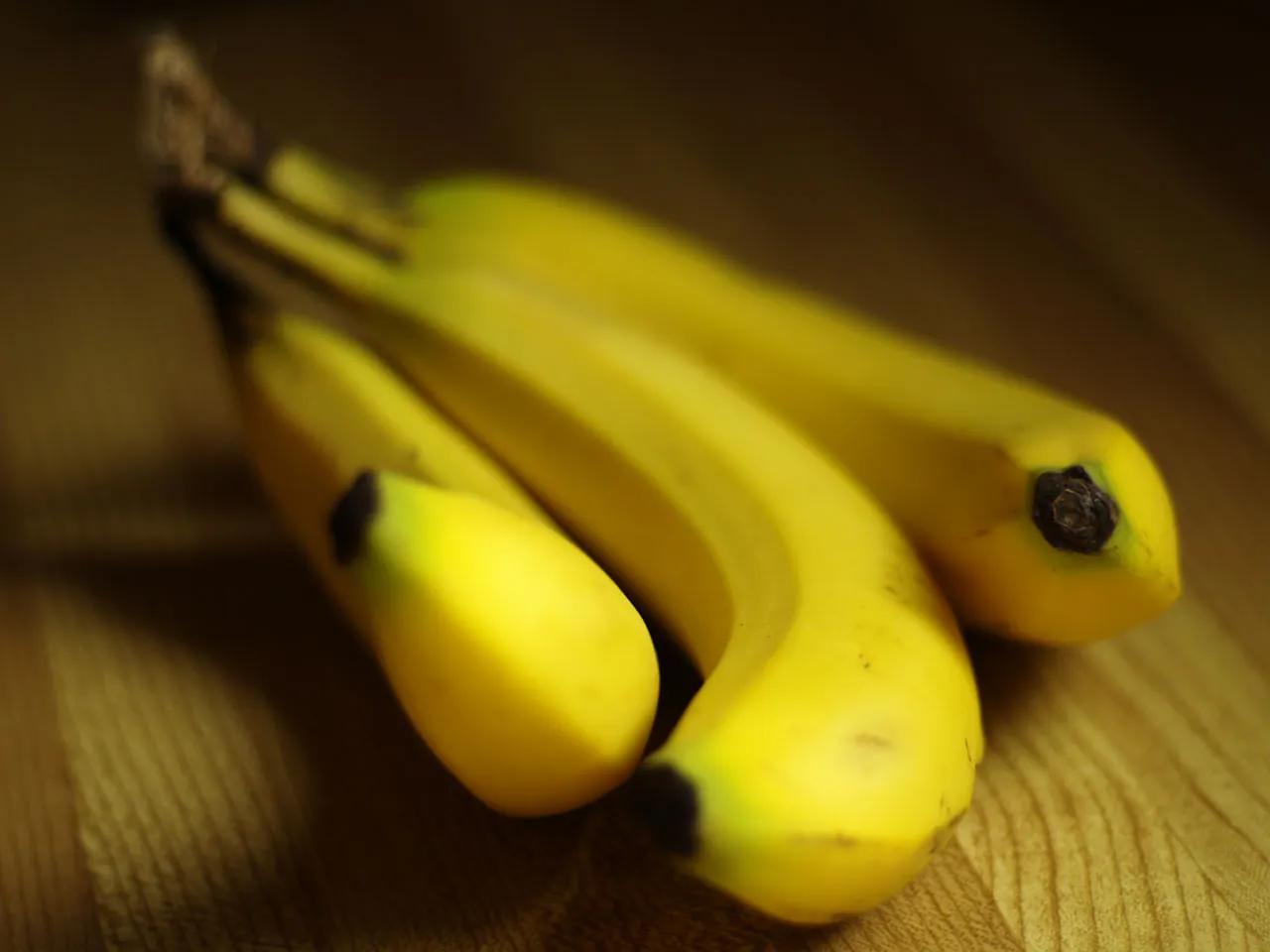
This is what your average banana contains:
- Potassium: 9% of the RDI.
- Vitamin B6: 33% of the RDI.
- Vitamin C: 11% of the RDI.
- Magnesium: 8% of the RDI.
- Copper: 10% of the RDI.
- Manganese: 14% of the RDI.
- Net carbs: 24 grams.
- Fiber: 3.1 grams.
- Protein: 1.3 grams.
- Fat: 0.4 grams.
Other than these important vitamins, minerals, and nutrients, bananas contain pectin. Pectin may help keep your blood sugar levels in check. It has been found, also, to reduce appetite by slowing down the emptying of the stomach. Bananas help your digestive health by supplying a healthy amount of dietary fiber, too! The average banana contains roughly 3 grams of fiber.
Like most of us know: bananas contain a good amount of potassium, which helps with control of blood pressure and is good for your heart.
I have noticed that when I start my day with a banana, I usually stay full for quite a while. Bananas also have great flavor and are sweet, so they are a great way to get your kids to eat some fruit in the morning!
Banana ripeness preferences differ from person to person, so if you’ve got a picky little one, let them decide for themselves how ripe they like their bananas. Some people like them when they are very green and others like them almost completely brown. I like mine somewhere in the middle!
There are so many ways to add bananas to your diet. Here are a few of my favorites:
- Cut bananas into rounds, dip in melted chocolate and freeze for quick snacks
- Make pancake batter with mashed bananas and oatmeal
- Add sliced banana and strawberries to a crepe
- Add sliced banana to your cereal
- Sprinkle banana slices over pancakes
For more information about bananas and our favorite banana recipes, visit Fill Your Plate.
References
Will Bananas Be Extinct in Ten Years? (2015, August 13). Retrieved April, 2017, from http://www.snopes.com/food/warnings/bananas.asp
Ware, M. (n.d.). Bananas: Health benefits, facts, research. Retrieved April, 2017, from http://www.medicalnewstoday.com/articles/271157.php
11 Evidence-Based Health Benefits of Bananas . (2016, August 17). Retrieved April, 2017, from https://authoritynutrition.com/11-proven-benefits-of-bananas/
Avoiding The Deadly Quartet
By Nathan Chambers, Recent Arizona State University Nutrition Student
Insulin resistance, an excessive intake of sugar and refined carbohydrates, even eating a large amount of saturated fat… these are precursors for diabetes. But did you know that there is another issue out there? One with which some sources claim 35% of the adult population in the United States is afflicted?
Metabolic syndrome is associated with being overweight, obesity, insulin resistance, and an inactive lifestyle. But developing metabolic syndrome could only be the beginning… individuals suffering from this disorder are extremely likely to develop cardiovascular issues and type II diabetes.
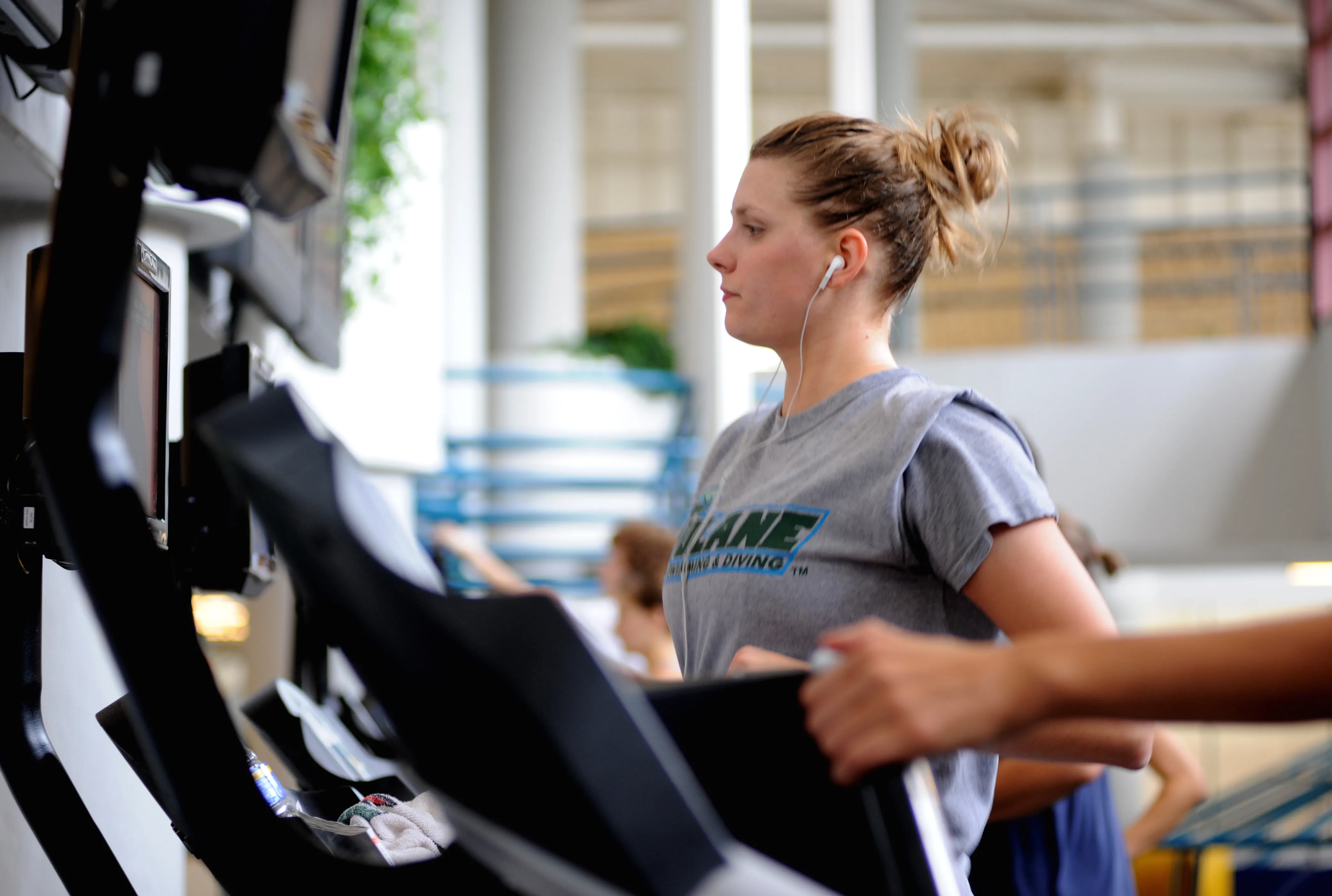
What is it?
Metabolic syndrome (the deadly quartet) is defined as suffering from the following problems at the same time:
- Excess visceral body fat (fat around the midsection)
- Insulin resistance/High blood sugar
- Elevated blood pressure
- High blood cholesterol/triglyceride levels
Why?
Individuals who are eating an excessive amount of sugar are at risk of developing metabolic syndrome– or any of the individual symptoms associated with the syndrome. Attaining just one of these symptoms puts you at a severe risk compared to a person with a normal body weight, blood sugar level, blood pressure, etc. Childhood obesity is a huge factor in the development of metabolic syndrome and so many other problems later in life.
What can you do?
If you have been paying attention to our posts here at the Arizona Farm Bureau, you are probably doing just fine! All our posts are pointing to the same thing, almost every time. It isn’t about eliminating things from your diet. Healthful eating isn’t about harsh restrictions.
- Eat more vegetables
- Eat more fruits
- Eat legumes
- Eat more fish
- Eat more lean meat or poultry
- Eat probiotic and fermented foods
The Mediterranean diet is a diet high in healthful fats, which help to normalize blood cholesterol/triglyceride levels. It is also very high in vegetables and fruits which means it’s high in fiber. More and more I am seeing this way of eating being linked to health benefits.
An example of a day eating on the Mediterranean diet:
Breakfast:
Greek Yogurt
Berries
Granola (no sugar added; whole grain)
A handful of almonds
(I might add a cup of coffee with coconut oil)
350 calories (not including coffee)
Snack:
Apple
Vegetables
200 Calories
Lunch:
Fresh salad with oil and vinegar dressing
Hummus and whole grain pita
Tea
550 Calories
Dinner:
Grilled Salmon
Brown Rice
Grilled Veggies
550 Calories
That’s a total of about 1650 calories… depending on your portion sizes. This number of calories should be adequate for many people as is, or should be an okay place to start if you need to lose weight (depending on weight/health factors. When cutting calories always consult with a doctor). If you’re an active male, add in one more snack and have slightly larger portions. This will get you to 2000+ calories no problem!
For more delicious and healthy meal inspiration visit Fill Your Plate’s recipe page!
References:
Eckel, R. H., Alberti, K., Grundy, S. M., & Zimmet, P. Z. (2010). The metabolic syndrome. The Lancet, 375(9710), 181-183. doi:10.1016/S0140-6736(09)61794-3
Yazdanpanahi, Z., Hajifoghaha, M., & Nematollahi, A. (2012). 1722 metabolic syndrome: Birth weight and childhood obesity. Archives of Disease in Childhood, 97(Suppl 2), A486-A487. doi:10.1136/archdischild-2012-302724.1722
Sofi, F., Macchi, C., Abbate, R., Gensini, G. F., & Casini, A. (2013). Mediterranean diet and health. Biofactors, 39(4), 335-342. doi:10.1002/biof.1096
Quick and Easy Rice & Beans
By Cameron Saylor, Recent Arizona State University Nutrition Student
As a college student, my time can be very limited. Thus, I sometimes forget to eat and when I remember I usually go for what is fast and easy. One of the ways that I make sure I am eating plenty of nutrients and making good choices, is by meal prepping. Below, I detail one of my favorite meal prep recipes. Spanish rice and refried beans is full of many healthy fats, fiber, protein and carbohydrates. It can be easily eaten as an on the go snack or added to a tortilla with some shredded chicken and sliced avocado. The best part about this recipe is that it takes only about 30 minutes to make. Check it out below.
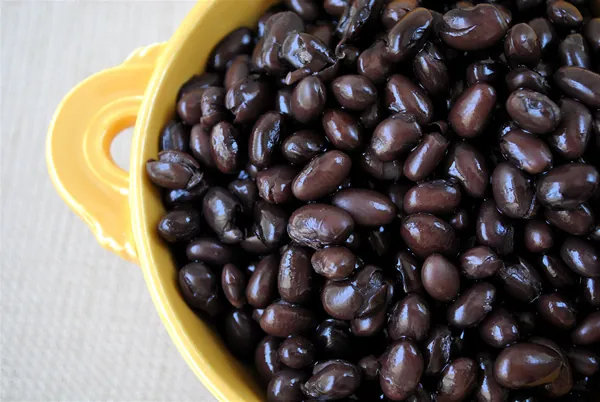
Refried Beans
Ingredients:
- 1 clove garlic minced
- 1 tsp oil (I use avocado but feel free to use your favorite cooking oil)
- 2 cans pinto beans drained and rinsed
- 1/4 tsp cumin
- 1/4 tsp chili powder
- salt to taste
In a small stock pot, sauté garlic in oil until fragrant (1-2 minutes), add remaining ingredients and heat to boil. Stir until desired consistency is met. You can also try adding onions, diced green chilies or hot sauce in place of dry spices.
For a quick snack, top with cheese or whip up a quick batch of 5 layer nachos. (Chips, cheese, lettuce, beans, and tomatoes)
Spanish Rice
This recipe has a slight kick of heat to it, if you are not a fan of heat, substitute one 6 oz can of tomato sauce and 1/2 tablespoon chicken bullion in place of El Pato.
Ingredients:
- 2 tsp oil (avocado, canola, vegetable, or whatever oil you prefer to cook with)
- 1 cup long grain white rice (for cooking white rice, liquid to grain ratio is 1: 2 meaning, 1 part rice, 2 parts liquid) ** You may also use brown rice, this will require slightly more water.
- 5-2 cups water (when cooking any grain, excess water may be an issue. That’s fine, just drain remaining liquid. If too dry, add more water.)
- 1 can El Pato. (spiced tomato sauce, in the Mexican food section)
- 1 green onion shoot if desired. ( throw in while rice is cooking and pick out before serving.)
Brown rice in oil on medium heat until lightly browned. Do not allow to burn. In a measuring cup, add El Pato and fill remaining volume with water to equal desired portion of liquid to rice ratio. Add liquid to rice (add the liquid slowly as the liquid will start to boil). Bring to boil, toss in green onion if desired. Place on low heat until rice is done or to desired taste/texture. About 15/20 mins. When the rice is done, remove the onion and enjoy with some fresh green onions on top or mix with the beans from the recipe above and make it a light dinner.
If you liked this recipe, be sure to stay tuned for more recipes to come and check out FillYourPlate.org!

